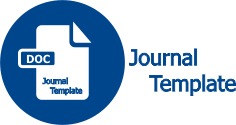Relevansi Cum-Dividend Date Dengan Perubahan Harga Saham Pada Sektor Manufaktur Di Bursa Efek Indonesia
DOI:
https://doi.org/10.30651/blc.v15i02.1279Abstract
ABSTRACTÂ
This study focuses on analyzing the stock price changes in the days around the cum-dividend date. Cum-dividend date is the date when the shareholdersare entitled to receive the dividend already declared, which will be paid on the pre-determined date. The sample of this study consists of 37 manufacturing companies that are continuously distributing dividends from 2014 to 2016. The results show stock prices tend to be higher on the cum-dividend date. The analysis onyear 2015 data shows that significant stock price differences were found only between the cum-dividend date and the first day after cum-dividend date. Different results are found for data of 2016, where significant stock price differences occur between cum-dividend date and day one, day two, and day three after cum-dividend date. The implication of the research result is that cum-dividend date has the potential to become one of investment strategy in capital market.
Keywords                  : stock price, cum-dividend date, investment strategy
Correspondence to      : retsi_ayu@yahoo.co.id, alfi.rif@unej.ac.id, bayu@unmuhjember.ac.id
Â
ABSTRAK
Penelitian ini berfokus pada kajian perubahan harga saham pada hari-hari di sekitar cum-dividend date. Cum-dividend date (hari dengan dividen) adalah tanggal ketika pemilik saham berhak untuk menerima dividen yang telah dinyatakan, yang akan dibayarkan pada suatu waktu. Sampel penelitian ini berjumlah 37 perusahaan manufaktur yang secara terus menerus membagikan dividen tahun 2014 sampai 2016. Hasil penelitian menunjukkan harga saham cenderung lebih tinggi pada cum-dividend date. Pada analisis terhadap data tahun 2015, perbedaan harga saham yang signifikan ditemukan hanya antara cum-dividend date dan hari pertama sesudah. Hasil berbeda ditemukan untuk data tahun 2016, dimana perbedaan harga saham yang signifikan terjadi antara cum-dividend date dan hari pertama, kedua, dan ketiga sesudah cum-dividend date. Implikasi hasil penelitian adalah cum-dividend date berpotensi untuk dijadikan sebagai salah satu strategi berinvestasi di pasar modal.
Kata kunci                 : harga saham, cum-dividend date, strategi investasi
Korespondensi            : retsi_ayu@yahoo.co.id, alfi.rif@unej.ac.id, bayu@unmuhjember.ac.id
References
Abeyratna, G., A. Lonie, D. Power, dan C. Sinclair. 1996. The influence of company financial performance on the interpretation of dividend and earnings signals: A study of accounting and market based data, British Accounting Review, 28(3), 229-247.
Aharony, J. dan I. Swary. 1980. Quarterly dividends and earnings announcement and stockholders’ return: An empirical analysis, Journal of Finance, 35(1), 1-12.
Al-Yahyaee, K.H., T.M. Pham, dan T.S. Walter. 2011. The information content of cash dividend announcements in a unique environment, Journal of Banking & Finance, 35(3), 606-612.
Asquith, P., dan D. W. Mullins, Jr. 1983. The impact of initiating dividend payments on shareholders' wealth, Journal of Business, 56(1), 77-96.
Baker, K.H., S. Samir, S. Dutta, dan D. Gandhi. 2007. The perception of dividends by Canadian managers: New survey evidence, International Journal of Managerial Finance, 3(1), 70-91.
Bashir, U., S.Z. A. Shah, dan M. Hussain. 2013. On the differential market reaction to dividend announcement: Evidence from an emerging equity market, Financial Assets and Investing, 3(1), 7-24.
Benartzi, S., R. Michaely, dan R.H. Thaler. 1997. Do changes in dividends signal the future or the past?, Journal of Finance. 52(3), 1007-1034.
Bhattacharya, S. 1979. Imperfect information, dividend policy, and ‘the bird in the hand’ fallacy, Bell Journal of Economics. 10(1), 259-270.
Bozos, K., K. Nikolopoulos. Dan G. Ramgandhi. 2011. Dividend signaling under economic adversity: Evidence from the London Stock Exchange, International Review of Financial Analysis. 20(5), 364-374.
Cherkasova, V.A. dan Petrukhin, V.V. 2017. The ex-day phenomenon and share price performance on emerging markets, Journal of Coporate Finance Research, 11(1): 16-36.
DeAngelo, H., L. DeAngelo, dan D.J. Skinner. 1996. Reversal of fortune: Dividend signaling and the disappearance of sustained earnings growth, Journal of Financial Economics. 40(3), 341-371.
Fama, E.F.1970. Efficient Capital markets: A review of theory and empirical work. The Journal of Finance. 25(2), 383-417.
Fargher, N.L. dan R.A. Weigand. 2009. Cross-sectional differences in the profits, returns and risk of firms initiating dividends, Managerial Finance. 35(6), 509-530.
Frankfurter, G.M. danB.G. Wood Jr. 2002. Dividend policy theories and their empirical tests, International Review of Financial Analysis. 11(2), 111-138.
Ghosh, C. dan R.J. Woolridge. 1988. An analysis of shareholder reaction to dividend cuts and omissions, Journal of Financial Research. 11(4), 281-294.
Gumanti, T.A. 2013. Kebijakan Dividen: Teori, Empiris dan Implementasi. Yogyakarta: UPP-STIM YKPN.
Gunasekarage, A. dan D.M. Poyer. 2006. Anomalous evidence in dividend announcement effect, Managerial Finance. 32(3), 209-226.
Healy, P. M., dan K.G. Palepu, 1988, Earnings information conveyed by dividend initiations and omissions, Journal of Financial Economics. 21(2), 149-175.
How, J.C., K. Ngo. dan P. Verhoeven. 2011. Dividend initiations and long-run IPO performance, Australian Journal of Management. 36(2), 267-286.
Isaksson, A. 2013. The ex-dividend-day price behaviour of blue-chip stocks: International evidence, Asian Journal of Finance & Accounting. 5(1): 73-88.
Lease, R. C., K. John, A. Kalay, U. Loewenstein, dan O. H. Sarig. 2000. Dividend Policy: Its Impact on Firm Value, Harvard Business School Press, Boston, Massachusetts.
Lee, S.P., M. Isa, dan W.L. Lim. 2012. Dividend changes and future profitability: evidence from Malaysia, Asian Academy of Management Journal of Accounting and Finance. 8(2), 93–110.
McManus, I.D., A. Gwilym, dan S.H. Thomas. 2006. Payment history, past returns and the performance of UK zero dividend stocks, Managerial Finance. 32 (6), 518-536.
Rees, W. 1997. The impact of dividends, debt and investment on valuation models, Journal of Business Finance & Accounting. 27(7&8), 1111–1140.
Tsuji, C. 2012, A discussion on the signaling hypothesis of dividend policy, The Open Business Journal. 5, 1-7
Wijayantini, B., & Sari, M. I. (2017). Hubungan Kinerja Keuangan dan Rasionalitas Investor Industri Makanan Minuman Syariah yang Listed Di Bursa Efek Indonesia (BEI). Balance, 14(02).
Yip, P. P., M. Isa, G.W. Kester, dan S.P. Lee. 2010, Share price reaction to dividend announcements and the interaction with earnings announcements in the Malaysian stock market, Asian Journal of Business and Accounting. 3(2), 101–120.














